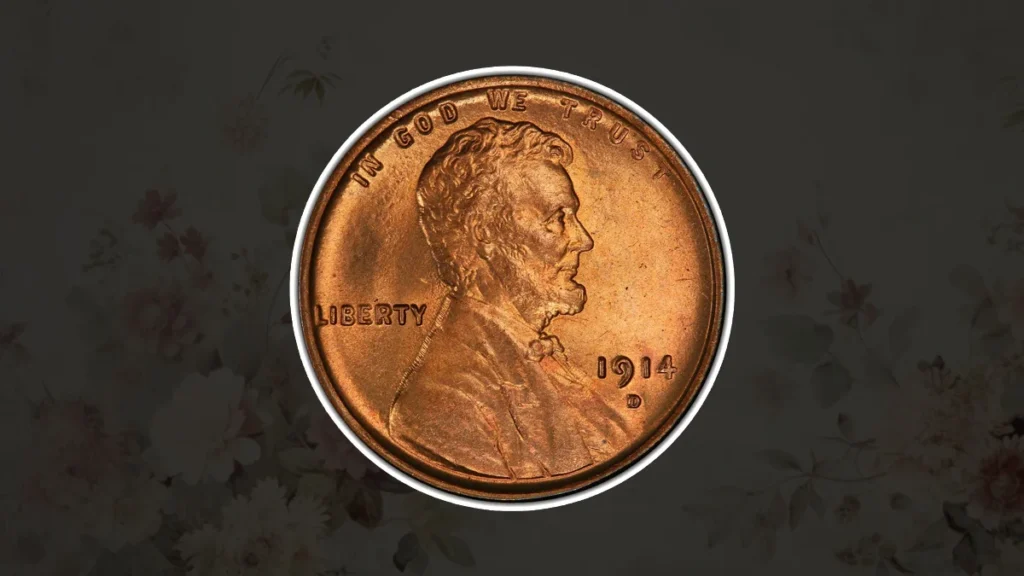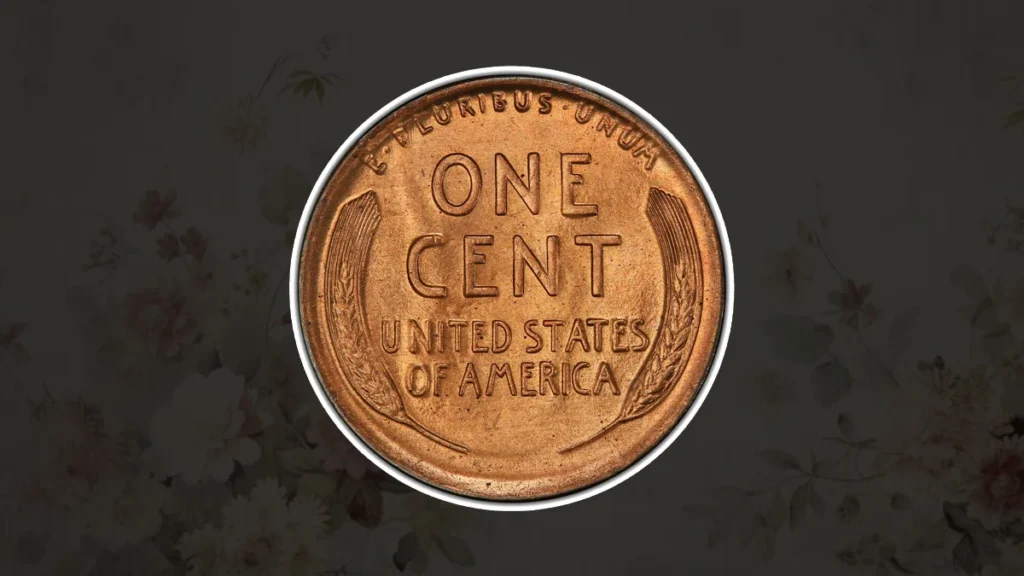
The 1914 Wheat Penny is one of the most popular coins within the Lincoln cent serieshas been minted since 1909 and continues to be in circulation today. These coins often make them valued by collectors because of its’ historical value, attractive design, and variation. Famous for its famous reverse design with two wheat stalks, the Wheat Penny was made from 1909 until 1958, when the Lincoln Memorial design took its place.
The 1914 Wheat Penny is famous for having many errors and variations that may greatly impact its value. So as to help collectors comprehend the minute details of these unique coins, this article explores the coin’s history, specifications, design, rarity, grading, errors, value, and more.
History of the 1914 Wheat Penny
During a period of significant economic and social change in the US, the 1914 Wheat Penny was minted. Denver (“D”), San Francisco (“S”), and Philadelphia (no mint mark) were all three mints where it was produced. Although Denver and San Francisco coins have been made in less quantities than Philadelphia coins, collectors find these coins to be some of the most valuable pennies due to their rarity.
Since the Denver Mint produced a small number of 1914 pennies overall, “1914-D” is one of the most important dates in the Wheat Penny series. The Philadelphia and San Francisco coins offer collectors more affordable alternatives, but the rarity of these coins has raised the cost of high-grade examples to staggering levels.
Specifications of the 1914 Wheat Penny
- Composition: 95% copper, 5% tin and zinc
- Weight: 3.11 grams
- Diameter: 19.05 mm
- Edge: Plain
- Mint Marks: No mint mark for Philadelphia, “D” for Denver, “S” for San Francisco
- Designer: Victor David Brenner
Design of the 1914 Wheat Penny
The 1914 Wheat Penny has the classic design introduced in 1909, designed by sculptor Victor David Brenner.
Obverse Design:

The obverse shows an image of President Abraham Lincoln looking right, with the text “LIBERTY” to his left, “IN GOD WE TRUST” above his head, and the year “1914” to the right side. Below the date of coins made in Denver and San Francisco is a mint mark.
Reverse Design:

“ONE CENT” and “UNITED STATES OF AMERICA” appear in the center of the reverse side, which also has two wheat stalks on either side. Above the denomination are the words “E PLURIBUS UNUM”. Wheat stalks serve agricultural wealth, lending importance to the design while also being patriotic.
Rarity and Condition of the 1914 Wheat Penny
The rarity of the 1914 Wheat Penny depends on the mint location:
- 1914 No Mint Mark (Philadelphia): The 1914 Philadelphia Wheat Penny is the most common among the three variations with over 75 million coins minted. It can always command high prices in Mint State (MS) requirements, while not extremely rare in lower grades.
- 1914-D (Denver): The 1914-D Wheat Penny is one of the lowest-mintage common issue coins in the Lincoln cent series with only 1,193,000 minted. Its rarity is especially unique in higher grades, making it one of the most dreamed Lincoln cents among collectors.
- 1914-S (San Francisco): The San Francisco Mint made 4,137,000 coins in 1914. While rarer than the Philadelphia coins, the 1914-S is not as rare as the 1914-D, though it still commands a premium, mainly in higher grades.
The coin’s grade or condition has a big impact on its value. In general, the value rises depending on the condition (nearer Mint State). Brown (BN), Red-Brown (RB), and Red (RD) are color designations that collectors frequently use when determining the value of a Wheat Penny, with Red examples being the most popular.
Grading the 1914 Wheat Penny
Coin grading is most important to determine a coin’s value. For the 1914 Wheat Penny, the Sheldon scale, going from 1 to 70, is used:
- Poor (P-1) to Fair (F-2): These coins are extremely worn and most design details are flattened.
- Good (G-4 to G-6): These coins wear is clear, but the main details like Lincoln’s profile and the wheat stalks are still visual.
- Very Good (VG-8 to VG-10): These coins have more clear detail, though still worn.
- Fine (F-12 to F-15): Lincoln’s are sharper, and the wheat stalks show more description.
- Very Fine (VF-20 to VF-30): These coins are moderate wear with clearer facts.
- Extremely Fine (EF-40 to EF-45): These are light wear on the highest points.
- About Uncirculated (AU-50 to AU-58): These coins are slightly worn, especially on Lincoln’s cheek and jaw.
- Mint State (MS-60 to MS-70): These are uncirculated coins with no signs of wear. Higher grades (MS65 and above) are extremely rare for 1914 Wheat Pennies.
Errors and Varieties of the 1914 Wheat Penny
The 1914 Wheat Penny has several errors and types, some of which can add important value:
- Die Breaks: These appear when the die used to strike the coin cracks or breaks, resulting in raised lines or blobs on the coin. Such errors can be little or dramatic, depending on the size and area of the break.
- Fake Mint Marks: Because of the high value of 1914-D coins, counterfeiters have been known to add a “D” mint mark to Philadelphia coins or change the date of a 1944-D penny to resemble 1914. Showing these coins is essential.
- Chipped Coins: This error arises when a coin is not removed properly from the press, generating a small part of the coin to chip or clip off. Chipped coins are considered mint errors and can be valuable.
Value of the 1914 Wheat Penny
The value of a 1914 Wheat Penny depends on its mint mark, condition, and color combination:
- 1914 No Mint Mark (Philadelphia): These coins are generally valued from $1 in low grades to around $6,000 for MS66. The record sale for an MS66 example was $48,300.
- 1914-D (Denver): The 1914-D is highly valuable because of its low mintage, with prices starting at $150 for low grades and reaching over $50,000 for MS66. The record for a Red MS66 coin is $158,625.
- 1914-S (San Francisco): The 1914-S may always bring prices that vary from $20 in lower grades to nearly $9,000 in MS65, however, it is not as rare as the 1914-D. A Red MS66 coin auctioned for $105,800, the highest amount ever stated.
Related Post –
- 1872 Indian Head Penny: A Complete Guide
- 1984 Washington Quarter: A Complete Guide
- 1983 Washington Quarter: A Complete Guide
- 1982 Washington Quarter: A Complete Guide
Conclusion
A favorite among collectors, the 1914 Wheat Penny is a unique example of early 20th-century American currency. It is an important date for someone interested in the Lincoln Cent series because of its variations, specifically the uncommon 1914-D, which can be worth a lot of money. Understanding the 1914 Wheat Penny’s design, history, and grading standards is essential for identifying its real value, whatever your level of collecting experience.
